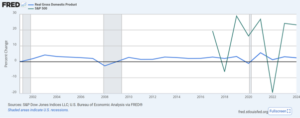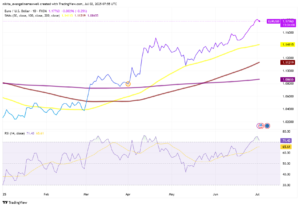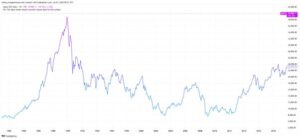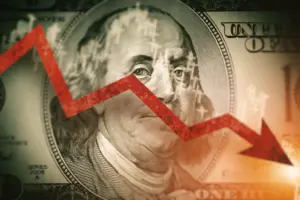The Reserve Bank of Australia (RBA) is set to meet on Monday and Tuesday to decide whether to adjust the cash rate. It is expected that the RBA will keep the interest rate steady at 4.35%, with no immediate rate cuts on the horizon. However, Australia’s four major banks hold differing views on when the central bank will start cutting rates.
Australia’s unemployment rate remained steady at 4.2% in August, dampening hopes for a rate cut in the short term. Although Commonwealth Bank (CBA), the largest bank in Australia, still predicts a rate cut by the RBA in 2024, it has pushed its forecast from November to December.
Predictions from the Big Four Banks
Commonwealth Bank expects the RBA to begin cutting rates in December 2024 and forecasts five cuts of 0.25% each by the end of 2025, bringing the cash rate down to 3.10%. Westpac, on the other hand, predicts the first cut will occur in February 2025, with a total of four cuts reducing the cash rate to 3.35%.
National Australia Bank (NAB) anticipates a potential rate cut in February 2025 but sees May 2025 as a more likely timeframe, with five total cuts bringing the rate down to 3.10%. ANZ expects rate cuts to begin in February 2025, with three cuts in total, lowering the cash rate to 3.60%.
Market analysts currently predict four rate cuts within the next 12 months, with the first 0.25% reduction expected in February 2025. If these cuts materialize, Canstar estimates that for an owner-occupier with a $600,000 mortgage, repayments could drop by $357 by the end of 2025, resulting in $2,846 less interest paid compared to a scenario with no rate cuts.
The RBA’s Position
RBA Governor Michele Bullock has repeatedly warned borrowers not to expect a rate cut in the "near term." The September meeting comes on the heels of the US Federal Reserve’s first 0.5% rate cut in four years. However, Bullock has stated that the RBA won’t be influenced by rate cuts from other nations.
She pointed out that while interest rates in the United States are currently higher than those in Australia, the RBA’s policy has deliberately aimed to reduce inflation without pushing the economy into recession or spiking unemployment. RBA Assistant Governor Sarah Hunter also emphasized that Australia’s labor market is operating "above full employment," indicating that demand and inflation remain too high for an imminent rate cut.
Expert Predictions
More than two-thirds of economists and experts surveyed by Finder expect the first RBA rate cut to come within the first three meetings of 2024, with 44% predicting the first cut in February. AMP Chief Economist Shane Oliver noted that while easing demand, employment, and inflation could drive rate cuts starting in February, the RBA is likely to hold off in the coming months.
Economist Saul Eslake believes that the RBA will likely keep rates unchanged throughout 2024, with the earliest rate cuts coming in February 2025, regardless of what other central banks do. He argued that the RBA has opted to tolerate inflation above its target range for longer than other central banks in order to preserve gains made in reducing unemployment and underemployment during 2021 and 2022.
Eslake also pointed out that, compared to other countries, the RBA has raised interest rates more gradually. While inflation hasn’t fallen as quickly as in places like the US, UK, Canada, and New Zealand, unemployment hasn’t risen as much either. As a result, Australia’s rates may not come down as soon or as much as in those countries.
The RBA’s decision will be announced at 2:30 p.m. on Tuesday, followed by a press conference with Governor Michele Bullock.
Conclusion
Although the market eagerly anticipates rate cuts from the RBA, it’s unlikely that they will happen in the short term. Australia’s major banks have varying predictions on when rate cuts will begin, with most forecasting the first cuts to take place in early 2025. Economists also expect that as inflation and demand gradually ease, the RBA will begin reducing interest rates over the next few years.





